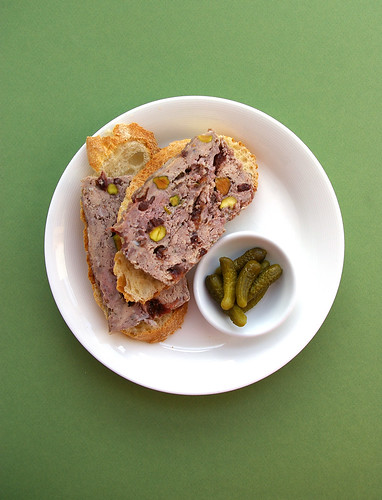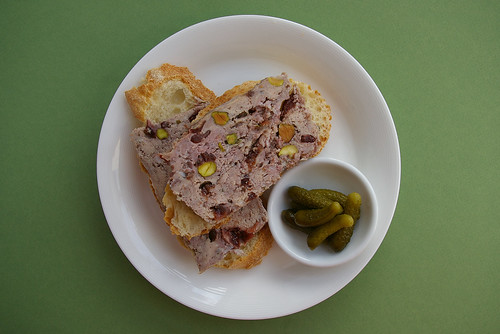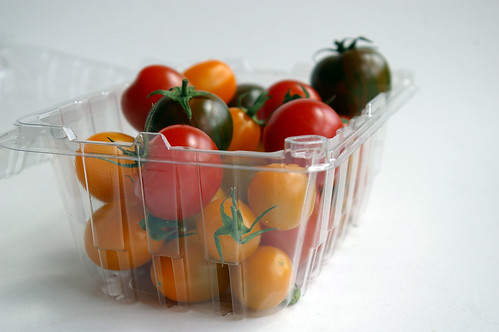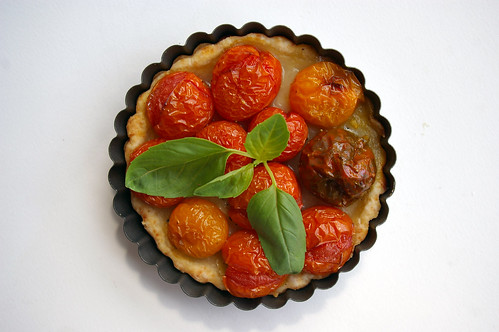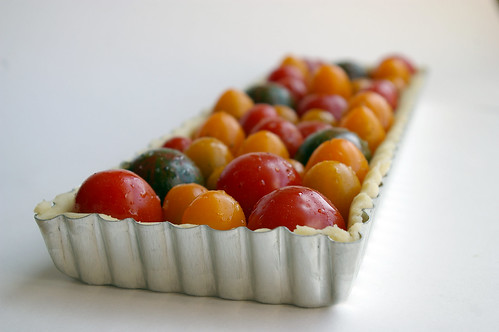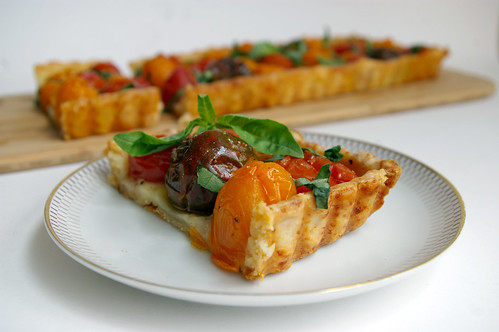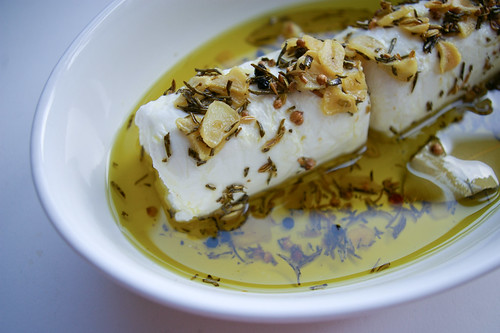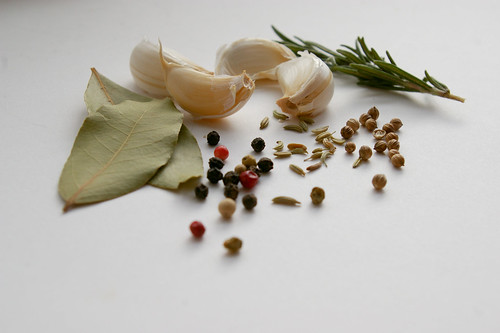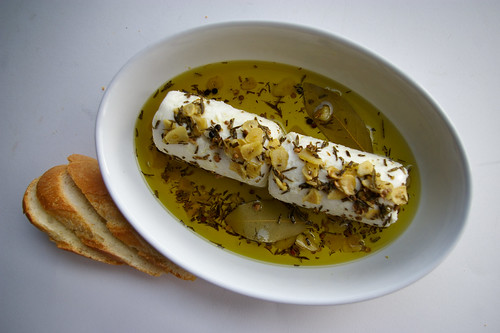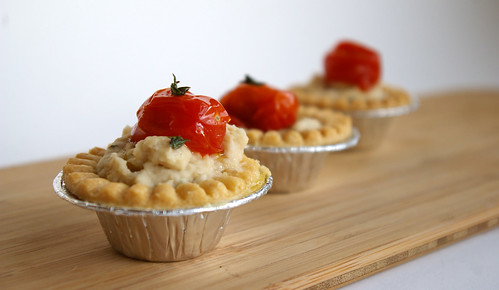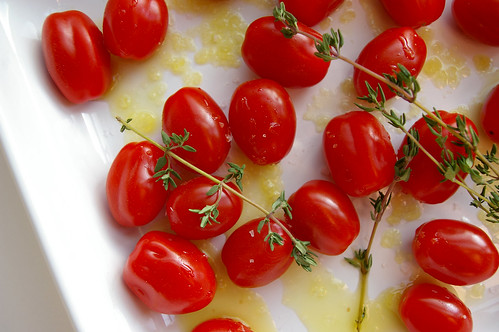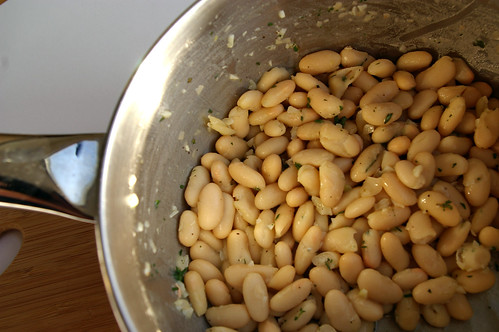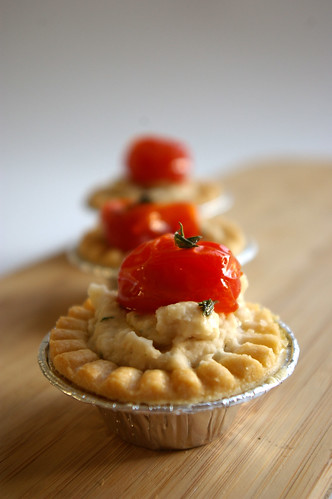Give me a plate of pate or terrine, some good bread and maybe something pickled on the side and I’m a happy girl.
The same can be said with a plate of cured meats, but I’m not about to make salami at home – not yet anyway.
Terrine, though, is essentially dressed-up meat loaf with a few extra steps (and a fancier name). And that is something I’m more than willing to take on in my kitchen – as dangerous as that might be.
It didn’t dawn on me to try this at home until I stumbled onto five terrine recipes in Donna Hay’s A Cook’s Guide – a book aimed at teaching home cooks some solid basic recipes with variations. When I reviewed the book for my column, I took on a baked risotto recipe, but I kept flipping back to this one for Chicken and Pistachio Terrine.
The combination of sweet and tart cranberries, nutty pistachios and a bit of tarragon mixed in to a chicken and pork terrine was very appealing.
It didn’t disappoint. Which is good. Because this recipe makes a lot of terrine.
As in, I’m pretty sure it could serve more than the recommended 10 to 12, depending on what else was being offered.
But that makes it a great dish for entertaining, especially as we head into the holiday season. (And yes, the green pistachios and red cranberries do make it seem even more festive.)
The fact that it’s incredibly easy to put together, not to mention that you make it the day before serving, also appeals.
It takes little more effort than putting all the ingredients into a bowl, mixing and dividing it between two loaf pans to bake in a water bath. Setting them in the fridge over night, covered with some foil, a piece of cardboard and something heavy produces a nice flat top , which makes them look more refined than rustic.
I ate a few slices on some baguette and ciabatta with some wee gherkin pickles and a couple of pickled cipollini onions.
And I was a very happy girl.
Chicken and Pistachio Terrine
The only changes to this recipe from Donna Hay are in the instructions. The original calls for a long, thin tin to bake the terrine in, but I’ve adapted it here to make two loaves baked in loaf pans lined with parchment paper for easy removal. It makes a lot of terrine, so if you’re making this for a smaller group, consider halving the recipe.
- 1 ¾ lb (800g) ground chicken
- 1 ¾ lb (800g) ground pork
- 3 slices bacon, finely chopped
- 3 cloves garlic, minced
- 2 tbsp (30 mL) chopped tarragon leaves
- 1 ½ cups (375 mL) dried cranberries
- ½ cup (125 mL) shelled unsalted pistachios
- 1 tbsp (15 mL) sea salt flakes
- 2 tsp (10 mL) cracked black pepper
- ½ cup (125 mL) port
- 3 eggs
Preheat oven to 350F (180C). Place the chicken and pork, bacon, garlic, tarragon, cranberries, pistachios, salt, pepper, port and eggs in a large bowl and mix well to combine.
Lightly grease two loaf pans and line with parchment paper. Divide the mix evenly between the two, pressing the mixture down lightly.
Cover with aluminum foil, place in a deep baking dish and pour in enough hot water to come halfway up the sides of the pan. (I used two baking dishes, putting one loaf pan in each dish.)
Cook for 1 ½ hours or until firm. Remove tins from the hot water.
Cut two pieces of cardboard to fit over the terrine.
Fit over the aluminum foil and weigh down with a heavy object. (Canned vegetables are good here.)
Refrigerate overnight. Remove the terrine from the pan and slice to serve.
Serves 12 to 24. Note: There was some excess fat that resulted from baking the terrines. I gently poured it off before refrigerating them.
This article first appeared in the Calgary Herald. For more recipes and ideas, check out CalgaryHerald.com/Food.

